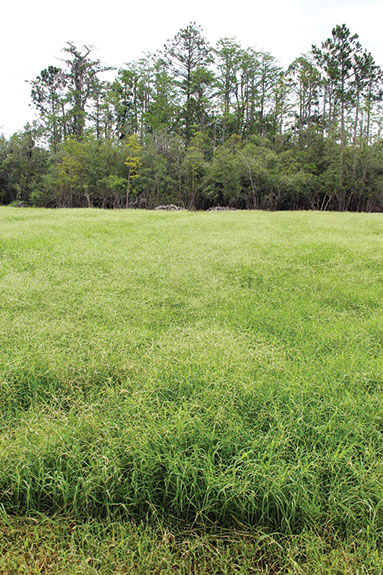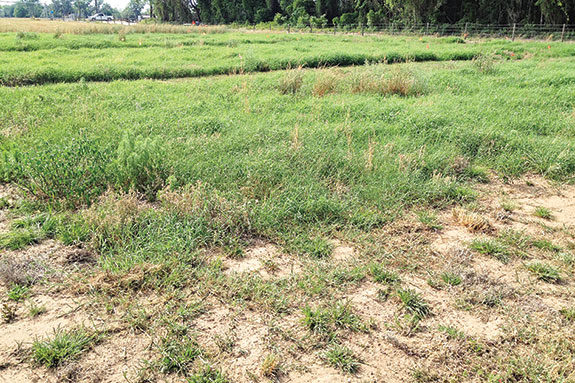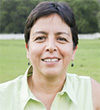We have faced the driest, the wettest and the warmest fall, the coldest spring and the most extreme winter-spring temperature changes.
These weather conditions beg the question: “How do we manage pastures after or during tough conditions?”
The challenge for forage production is to manage the onset of early warm-season conditions when pastures have been recently affected by freeze events.
The Southeast has the ideal environment for perennial warm-season pasture production. Florida, for example, counts on a long warm season, steady summer rainfall and soil texture that favors abundant forage growth given proper management.
Pasture recovery, however, requires managing by growing conditions more than by traditional seasonal practices.
There are many considerations for pasture recovery but the most critical include doing things in the right order – weed control first, forage fertilization second, and then pasture rest and proper stocking rate.
• Following the right order of field practices – The goal in pasture management is to produce enough forage for beef, milk or performance (horses) in the most economical way.
Skipping practices frequently results in additional expenses – usually weed control-associated expenses.
Avoid falling in the traps that initial weather conditions bring. With the arrival of spring, more often than not, there is the appeal to overlook or skip the control of a “minor” weed problem.
The weeds may not look like a big threat when the grass is greening up. With the first signs of warm weather, you may be compelled to skip weed control and go straight into fertilization.
A precipitated fertilization will result in unnecessary weed problems. For some pastures, the first thing to do is to get rid of the thatch that has accumulated over the winter period by either burning or mowing.
Many pastures, though, will be overgrazed and encroached with weeds early in the season.
• Weed control prior to fertilization – Overgrazed winter paddocks are not desirable, but they occur frequently. Overgrazing results in grass stubble heights that are too short or minimal.
Pastures with short stubble heights will have more bare ground exposed to sunlight, consequently stimulating germination of weed seeds due to more light reaching the soil surface.
Weeds in forage pastures are the main competitors for light, soil nutrients and water.
In many cases, they are toxic plants – and even if they are not, weeds in general do not produce a desirable yield.
Competition from weeds can be dangerous, particularly for recovering plants or forage seedlings trying to survive.
In established stands, weeds are passively waiting for the opportunity to encroach.
Because most weeds are short-lived, they flower profusely and early as a survival mechanism, while some weeds have vigorous rhizomes that make them very competitive.
Pasture weeds need to be controlled early (at rosette stages) before they develop into larger plants. Many weeds have underground reserve storage or rhizomes that make them harder and more expensive to control. The worst-case scenario is to allow them to flower and set seed.
Check your local guide for weed management in pastures for your specific case.
In most situations, fertilization is not recommended if the weeds have not been controlled. But if you have done the weed control, fertilization is the next step.
• Forage fertilization – Forage fertilization is the most practical tool to correct nutrient deficiency in soils and therefore improve pasture production.
Chemical fertilizers are highly soluble, and the nutrients are promptly available. However, in order for these nutrients to be absorbed, the forage plant needs to have the proper growing conditions and be “ready” for the uptake of these nutrients.
Warm-season forages have specific conditions for their growth and optimum development, which requires not only that growing ambient temperature is warm, but more importantly, that the soil is warm.
Spring in the deep South is confusing to many who are trying to get ahead with their pasture fertilizer applications.
The spring season tends to follow an oscillating temperature pattern with wide differences between minimum and maximum. It is good to review the growing conditions for warm-season pasture plants in order to know when to apply fertilizer for best utilization by the plant.
Bahiagrass and bermudagrass are tropical plants that have specific temperature and light requirements for maximum and efficient growth.
They have high temperature requirements and are sensitive to freezing temperatures.
Temperatures below 30ºF kill the leaves and stems, but growth will continue with night temperatures as low as 34ºF if day temperatures are near 70ºF. (We are past these conditions, but it is good to keep as a reference to know the extent of damage if you experience some of these conditions earlier in the winter.)
Soil temperatures of 65ºF and above are necessary for growth of rhizomes/roots and stolons (runners) of most warm-season grasses.
Wait for your fertilizer application until consistent warm soil temperatures (65ºF and above) are present. Optimum soil temperature for root growth is around 80ºF.
Optimum daytime temperature is between 95º and 100ºF. These grasses are most productive from May to September, when average daily temperatures are consistently above 75ºF.
In terms of light, what are the requirements and implications – and how do they work toward pasture recovery?
Bahiagrass and bermudagrass have high light requirements. They do not grow well in shady conditions, such as under trees, under a companion summer crop that will shade them or under the spring growth of ryegrass.
If ryegrass or other cool-seasons have been overseeded into bahiagrass or bermudagrass fields, they need to be removed very early in the spring; otherwise, they may compromise the persistence of the warm-season grass.
• Pasture rest and adequate stocking rate – When plants are overgrazed, there is a reduction in the shoots and root development of the plant.
The root extension or elongation stops within 24 hours after removal of 40 to 50 percent of the forage shoot mass, and some fine roots may also die soon after grazing. Resting pastures allows for leaf and root recovery.
Providing enough rest from grazing defoliation allows for regrowth of leaves. First, the plant is able to start photosynthesis (process where the plant takes sunlight and converts it to green leaves), and over time the photosynthesis process increases.
The new leaf area needs to capture light and translate it into carbohydrate (energy) stored in the roots. It is fairly simple; allow the grass to grow (by temporarily resting the pasture), pasture shoots and leaves will re-grow, and the leaves will recover the root system.
The proper stocking rate is the one that leaves a good portion of the above-ground basal forage. In many cases, this represents the lower third of the plant.
Within sod-type grasses, there are variations. Some will grow more upright than others (limpograss more than stargrass and T-85 bermudagrass, stargrass and T-85 bermudagrass more than coastal bermudagrass, and coastal bermudagrass more than bahiagrass).
The rule to follow when managing stubble height should be higher for limpograss compared to stargrass or Tifton 85, higher in stargrass and Tifton 85 compared to coastal, and higher in coastal compared to bahiagrass. FG
PHOTOS
PHOTO 1: A weedy field of bermudagrass in north-central Florida in April.
PHOTO 2: A field in July after weed control and fertilization. Photos courtesy of Yoana Newman.
Yoana Newman
Forage Extension Specialist
University of Florida










